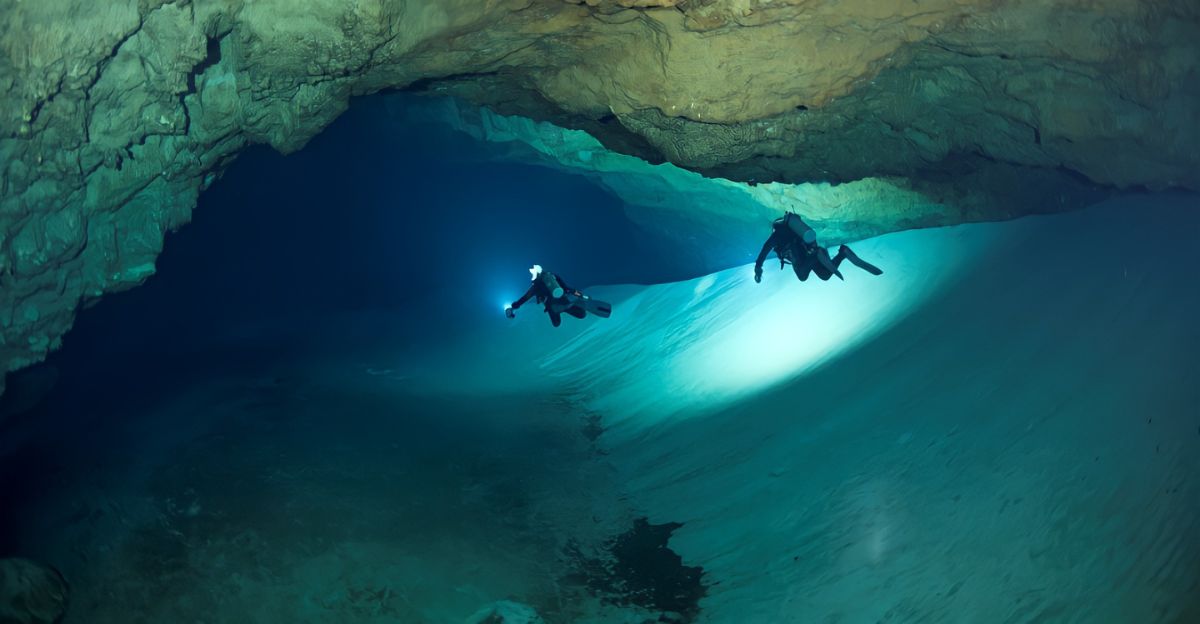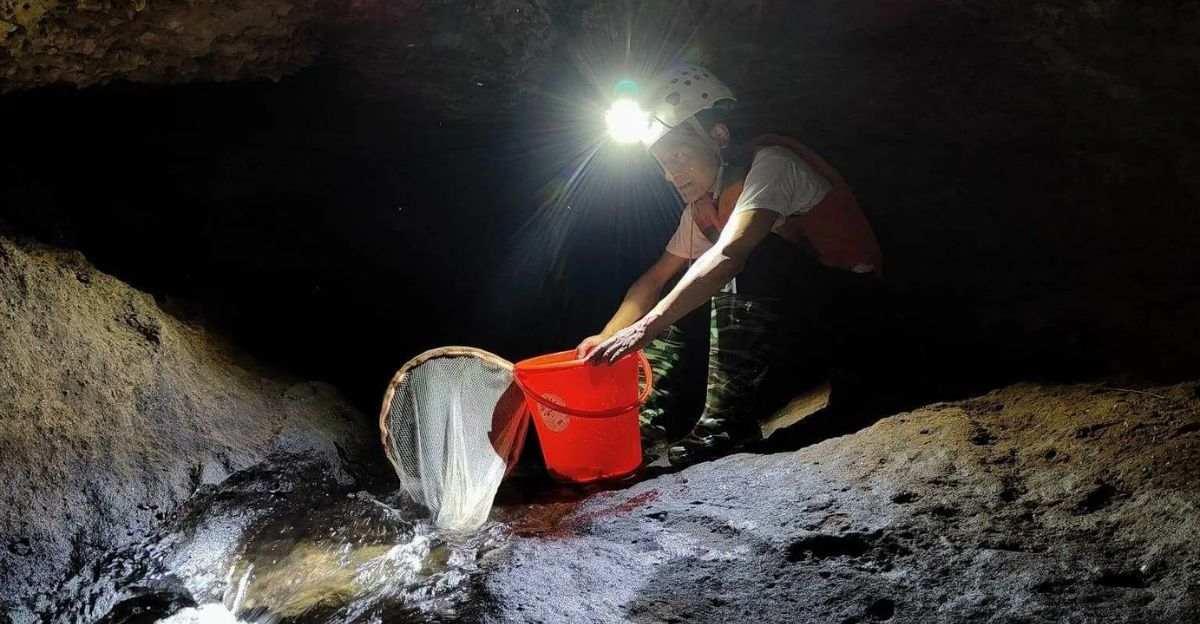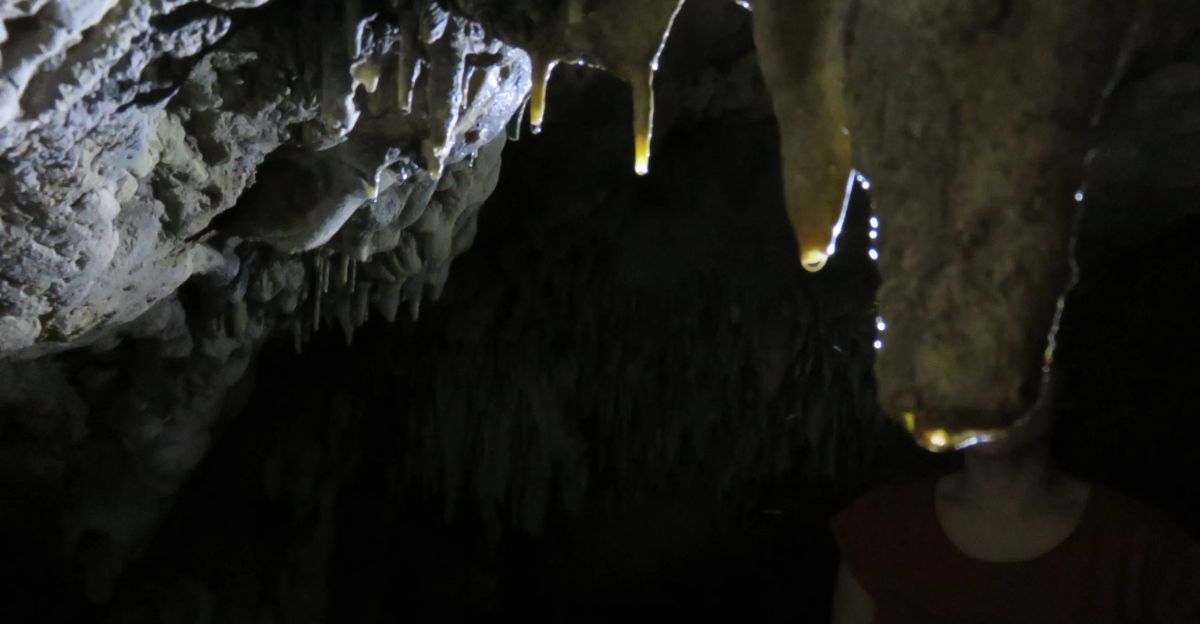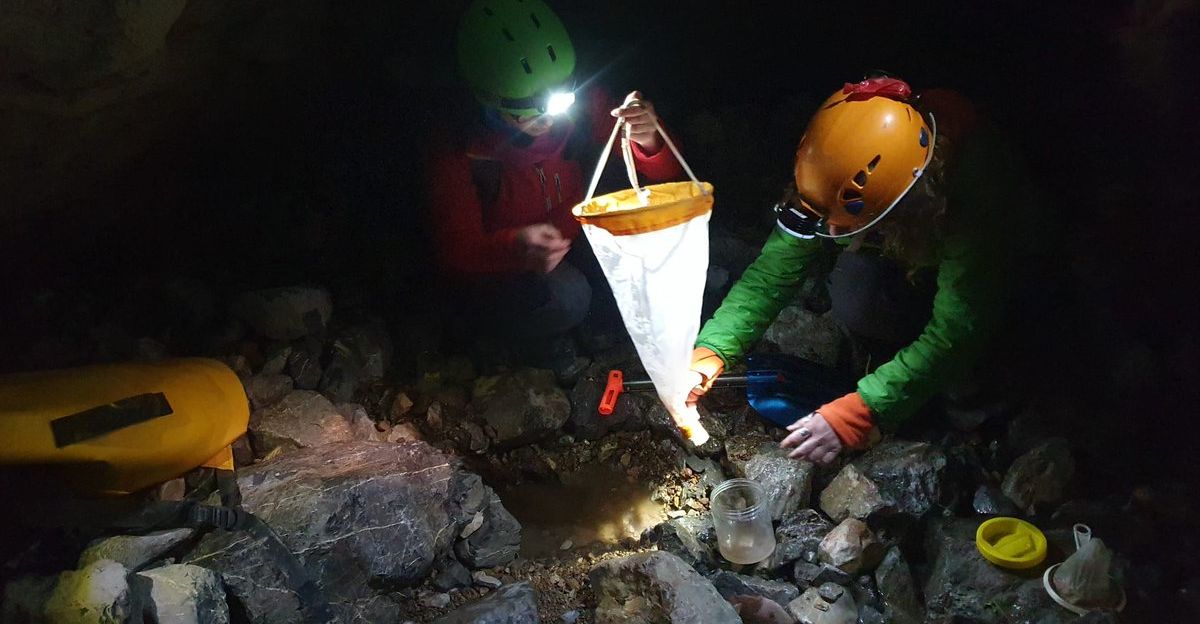
In a remarkable scientific breakthrough, researchers have discovered a new crustacean species, Tetragoniceps bermudensis, hidden within the limestone caves of Bermuda. This tiny copepod, found by scuba divers in a tidal cave called Roadside Cave, represents a rare glimpse into the island’s subterranean biodiversity. First collected in 2016, the species was formally described in 2025, highlighting the persistent mysteries beneath Bermuda’s surface.
The discovery is significant because it reveals a previously unknown facet of life thriving in extreme, isolated environments, underscoring the island’s role as a biodiversity hotspot. As the first cave-dwelling species of its genus worldwide and only the second in its family, T. bermudensis offers scientists a unique window into evolutionary processes in secluded habitats. This find enriches our understanding of Bermuda’s natural heritage and emphasizes the importance of protecting these fragile ecosystems.
Bermuda’s Limestone Tidal Caves

Bermuda’s limestone tidal caves, such as Roadside Cave in the Walsingham District, provide a unique and challenging habitat for life. These caves are characterized by their dark, oxygen-poor waters influenced by tidal flows, creating a dynamic environment where freshwater and seawater mix in stratified layers.
This anchialine system fosters specialized ecosystems that support endemic species adapted to survive in low-light, low-nutrient conditions. The caves’ geological formations, carved from ancient carbonate rock, form narrow passages and pools that remain largely undisturbed. Despite their small size, these habitats are biodiversity hotspots, hosting rare and often unknown organisms. However, their fragile nature makes them vulnerable to environmental threats, underscoring the need for conservation efforts.
Introducing Tetragoniceps bermudensis

Tetragoniceps bermudensis is a tiny copepod crustacean. It is notable for being the first cave-dwelling species of its genus discovered anywhere in the world and only the second known in the family Tetragonicipitidae. Measuring just a few millimeters, this species was identified from a single egg-carrying female found in Roadside Cave.
Its physical adaptations reflect life in a dark, isolated environment, with specialized traits suited for survival in oxygen-poor, tidal-influenced waters. The specimen’s rarity suggests a limited population confined to a narrow subterranean range, typical of Bermuda’s cave fauna. This discovery highlights the existence of cryptic biodiversity in environments often overlooked by scientists and the public alike.
A Window into Evolutionary Isolation

The discovery of T. bermudensis offers a unique insight into evolutionary isolation. Living in Bermuda’s stable but extreme cave environment, this species represents an evolutionary relic preserved through millennia in seclusion from predators and competitors. Such isolation allows species to evolve independently, often developing highly specialized traits. T. bermudensis exemplifies how subterranean habitats serve as refuges for ancient lineages, providing living evidence of evolutionary history.
Studying these organisms helps scientists understand how life adapts to extreme conditions and how biodiversity persists in isolated ecosystems, contributing valuable knowledge to evolutionary biology and conservation science.
Biodiversity and Ecosystem Role

Copepods like T. bermudensis play a crucial role in aquatic food webs worldwide, serving as primary consumers that transfer energy from microscopic algae to larger predators. In Bermuda’s subterranean ecosystems, cave-dwelling copepods contribute to the delicate balance of nutrient cycling and energy flow. Often overlooked ecosystems harbor unique biodiversity that supports specialized food webs adapted to low-light, low-oxygen conditions.
The presence of T. bermudensis underscores the ecological importance of anchialine caves, where endemic species maintain fragile ecosystems vulnerable to disturbance. Protecting these habitats ensures the survival of such specialized organisms and the overall health of Bermuda’s subterranean biodiversity.
From Collection to Classification

The journey to identifying Tetragoniceps bermudensis spanned nearly a decade. The initial specimen, a single female carrying eggs, was collected in 2016 during explorations of Roadside Cave. Over the following years, scientists conducted meticulous morphological and genetic analyses to confirm it as a new species.
The formal description was published in 2025 in the peer-reviewed journal ZooKeys. This painstaking process highlights the challenges of studying cryptic cave fauna, requiring advanced techniques and international collaboration. The discovery exemplifies how patient, detailed scientific work can reveal hidden biodiversity even in well-studied regions.
Threats to Bermuda’s Subterranean Habitats

Bermuda’s cave ecosystems face significant threats from human activities such as urban development, pollution, vandalism, and unauthorized access. These pressures jeopardize the fragile habitats that support species like T. bermudensis. Sediment disturbance and contamination can disrupt the delicate balance of anchialine systems, potentially leading to the loss of endemic fauna.
Conservationists emphasize the urgent need for formal protection of caves like Roadside Cave, alongside enforcement of existing regulations. Preserving these subterranean environments is critical for rare species and maintaining the ecological integrity of Bermuda’s unique underground biodiversity.
Cave Biology and Broader Scientific Fields

Discoveries like T. bermudensis intersect with diverse scientific disciplines beyond taxonomy. Cave biology informs evolutionary biology by illustrating how isolation drives speciation. The stable, extreme conditions of anchialine caves provide analogs for studying climate change impacts and even astrobiology, as these environments resemble extraterrestrial habitats.
Research on cave fauna contributes to understanding life’s adaptability to darkness, low oxygen, and nutrient scarcity. Such insights have implications for biotechnology and environmental science, showcasing how subterranean biodiversity can inspire innovations and broaden scientific horizons.
Contrarian Viewpoints and Surprising Case Studies

Contrary to the common perception of caves as barren voids, they are vibrant hotspots of undiscovered biodiversity. Species like T. bermudensis challenge the assumption that life is sparse underground. Other examples include blind cavefish and extremophiles that thrive in harsh conditions, demonstrating remarkable evolutionary adaptations.
These organisms reveal life’s resilience and the vast unknown diversity beneath the Earth’s surface. Recognizing caves as biodiversity reservoirs shifts conservation priorities and encourages exploration, highlighting the need to protect these surprising ecosystems from neglect and destruction.
The Ongoing Quest to Understand Hidden Worlds

The discovery of Tetragoniceps bermudensis enriches our understanding of Bermuda’s subterranean biodiversity and exemplifies the scientific value of exploring hidden ecosystems. It underscores the importance of continued research and conservation to unveil and protect the fragile life forms dwelling in these isolated habitats.
As scientists delve deeper into caves worldwide, each new species broadens our knowledge of evolution, ecology, and the resilience of life. Protecting these environments ensures that future generations can appreciate and study the remarkable diversity beneath our feet, fostering a greater appreciation for the planet’s unseen natural wonders.
Explore more of our trending stories and hit Follow to keep them coming to your feed!

Don’t miss out on more stories like this! Hit the Follow button at the top of this article to stay updated with the latest news. Share your thoughts in the comments—we’d love to hear from you!







